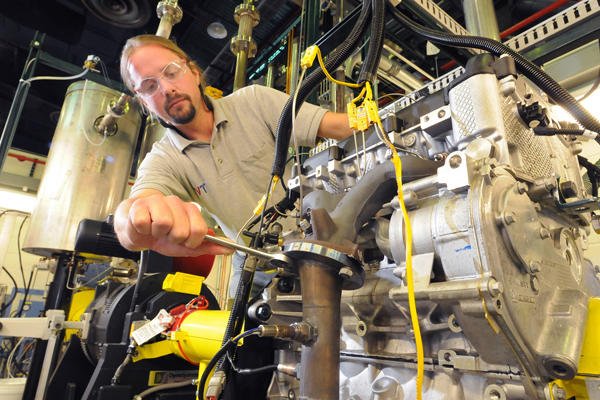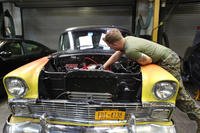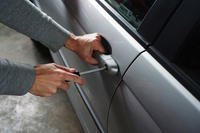A supercharger is a pump that compresses the intake air and forces it into the cylinders of a gasoline-powered car. Because superchargers are usually beltdriven by the engine (instead of being driven by recycled exhaust gases as a turbocharger is), they consume engine power to increase engine power. Because they're not fuel-efficient, they're generally used only to increase the speed of "high-performance," low-efficiency vehicles. Supercharging shouldn'tbe confused with turbocharging.
Turbocharging means to use a turbine — powered by the engine's waste gases — to force greater amounts of air into an engine's cylinders. This process produces more power in both diesel and conventional vehicles because they run on a greater volume of air and fuel. The more air the engine can take in, the bigger the bang during the power stroke of the four-stroke power cycle. At first, cars were turbocharged to perform better on racetracks, but when automakers began to put smaller engines in larger vehicles to lighten their weight and conserve fuel, turbocharging provided a way to increase the engine's power so that these bigger vehicles wouldn't be sluggish on the road.
Here is how turbocharging works:
1. The hot exhaust gases leave the exhaust manifold, but instead of going directly through the exhaust system and out of the vehicle via the tailpipe, they first pass through a turbine, which is just a fan that's set in motion by the expanding gases.
2. A shaft connects the fan to a compressor, which blows fresh, filtered air into the cylinders. (On a carbureted vehicle, the compressor takes the fuel/air mixture and blows it into the cylinders.)
3. The excess and used exhaust fumes pass from the turbine to the exhaust system and continue on their way to the tailpipe and out into the air.
The more load on the engine, the hotter and faster the exhaust fumes that turn the turbine. The faster they turn it, the more air the compressor sends to the engine and the more power the engine can produce. This unique way of converting exhaust gas energy into mechanical power has a nice merry-goround effect.
Sounds simple, doesn't it? Well, usually the first thing an engineer learns is"The simpler, the better," or as the Zen monks put it, "Less is more."
When it came to designing diesel cars, the pressing problem was how to change a car with a reputation of being noisy, underpowered, and smoky into a faster, quieter, more-efficient vehicle that could meet the requirements set by the U.S. Environmental Protection Agency (EPA). The results have been heartening indeed. A turbocharger can increase the power of a diesel vehicle by 50 percent while lowering its fuel consumption by 20 to 25 percent! What's more, because the turbine itself is powered by the hot gases that normally would go out of the exhaust pipe, you don't need to provide anything extra to drive it. What a wonderful example of recycling.
From Auto Repair for Dummies, copyright © 2009 by Wiley Publishing, Inc., Indianapolis, Indiana. Used by arrangement with John Wiley & Sons, Inc.










